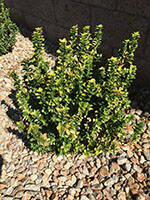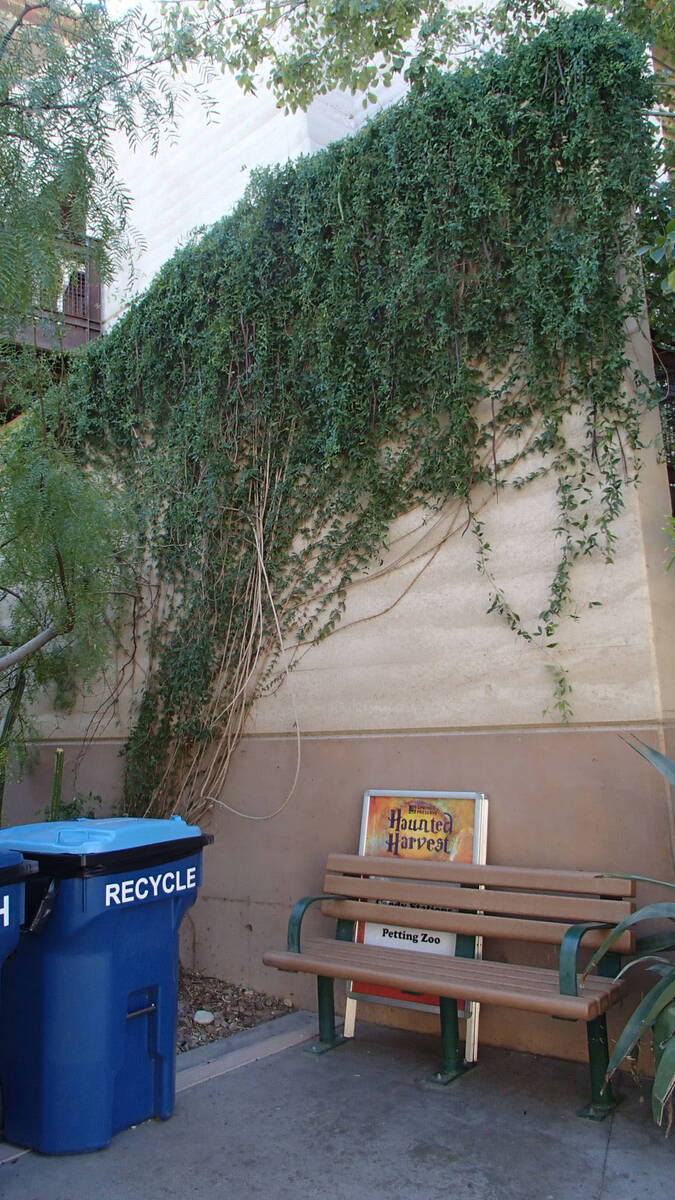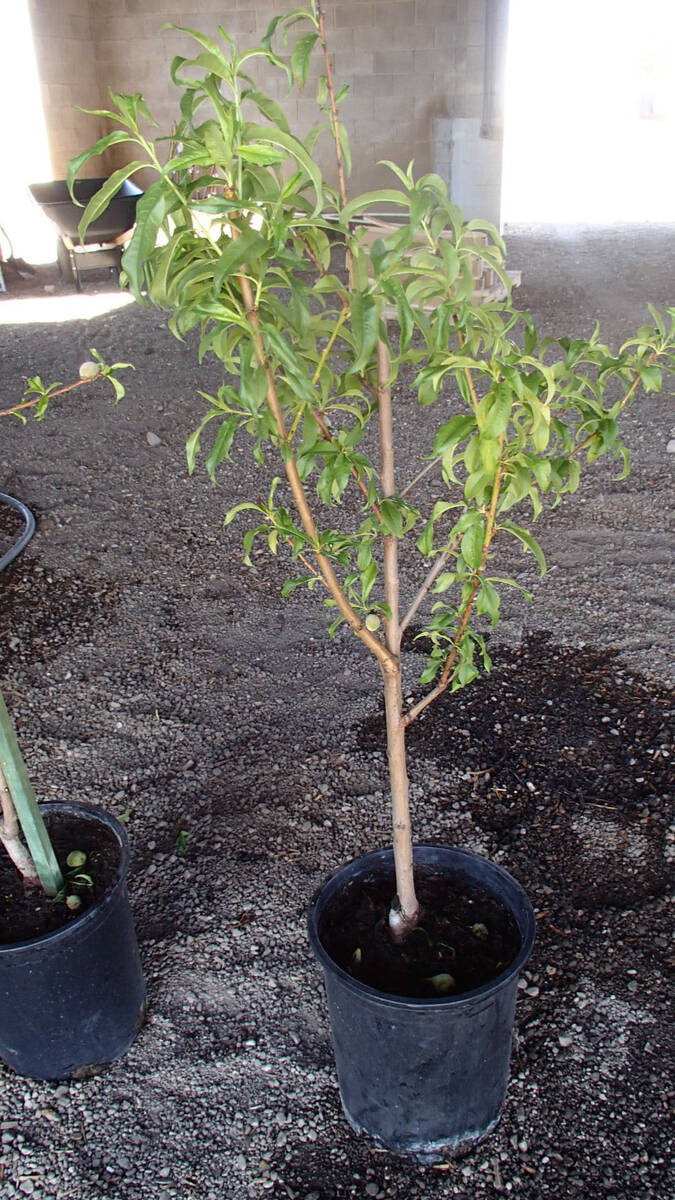Heat tolerance affected by location, proximity to wall
Q. After reading your recent gardening piece I have decided to take your advice and replace the bougainvillea and the western redbud with cat’s claw vine and an apricot and protect it with shade cloth. Is it better to plant a bareroot fruit tree or a potted one? Also, in this hot spot would a peach have as much chance as an apricot? As to shading the plants and wall should they be covered completely or built to only provide afternoon shade? My last question has to do with western redbud. I want to attempt to transplant it to a more favorable location. Is now a good time to transplant and are there steps I can take to help it survive?
A. I don’t remember the hot spot you’re talking about, but I am guessing its either a west- or south-facing wall and a side facing the same direction. Apricot and peach handle the heat about the same. But peach gets borers much more readily than apricot. Either one needs to be at least 5 feet from a hot wall. Pomegranate handles heat from a hot wall better than either apricot or peach. Anything you plant there should be heat tolerant.
Bareroot fruit trees are usually better to plant than potted, container trees. This is because the potted container trees are left too long in the container. They are too big and the roots start to circle inside the containers. If you buy a fruit tree that is smaller but in good health and well-branched, there is little difference between the two.
I am a little perplexed because bougainvillea handles heat but does not handle winter cold. Cat claw vine handles both summer heat and winter cold but needs some relief when it clings to a hot wall. A wall facing south or west will get about 160 to 170 F in the summer, too hot for any plant including cactus. It will need some shade during the summer months to climb it. Once any heat-tolerant vine climbs the wall, then the area will be cooler for planting fruit trees. Both vines use about the same amount of water when they are growing.
Move the western redbud now until about March if it is less than 3 years old. Make sure the soil is amended and it is firmly staked. Prune about one-third out of the tree to compensate for root losses during the move.
Q. Now I am really confused. How would you prune a grape vine that was grown on a patio cover? How can I get larger berries on the vine?
A. Good question. Grapes require a lot of visits. I would avoid pruning grapes from December through about mid-February in our climate unless it’s just to clean them up a bit. The vines will be a tangled mess. I would cut out or remove whatever it takes to make it easier to see where the fruit is produced. Try to avoid removing the smaller, different colored wood since this is probably last year’s growth and where the fruit will be produced.
These smaller, different colored parts of the vine will be pruned into a spur or cane the first week of March. The vines will “bleed” from pruning cuts made in late February or early March and before the new leaves come out but don’t worry about it because it’s not harmful.
Next, determine how much new growth is left. It is oftentimes a different color or texture so it might be easy to see. Ideally this new growth is in lots of places giving you lots of choices. After you finish your final pruning then you are done for about six to eight weeks. About two months later is pruning and pinching the immature grape bunches as they are enlarging. That’s in about April or May.
In about May, the berries in the bunches will start to form. You will do two things to get larger berries: remove bunches so they are about 8 to 10 inches apart and pinch or cut the bottom one third of the developing bunch. I use a scissors to do that. Removing smaller bunches and pinching the remaining bunches thins the berries so those that remain get bigger. Do it early when the berries are the size of baby peas.
Q. Last year I wrote about my dwarf oleanders planted over my pool equipment pipes. I removed those and placed planter boxes with green euonymus in them. These planter boxes face south and are exposed to full sun and can get very hot. They are also exposed to gales of wind coming off the mountain and the dirt gets blown. I am cautious about using rock as I suspect that rock will not allow the heat to escape in the summer. Do you have any other suggestion?
A. I am concerned about growing green euonymus in a hot location. These plants are not trustworthy to grow in hot locations. Watch them very closely for leaf scorch as the summer gets hotter. You may need to get them replaced. By the way, common euonymus gets about 8 feet tall and dwarf oleander will get about 4 feet tall but cannot tolerate our winter temperatures. Both of their roots get between 18 to 24 inches deep.
I would suggest smaller plants that are shallow rooted and heat tolerant such as some of the desert sage or desert penstemons. In a place that is hot you are better off with something from the desert. If they are grown on top of pipes, then I think you should put something that is smaller and has roots closer to 12 inches deep. That’s why I suggested those.
A mixture of large and small rock act like the desert surface. It has a lower surface temperature than asphalt or concrete due to the air pockets. I would not be afraid of larger and smaller rock used in a mixture similar to the desert. As close as the texture is to the desert floor, the desert plants will do fine.
Q. When planting new shrubs or relocating plants I apply a local nursery’s plant tonic. Can fish fertilizer be used as a supplement along with a nursery’s plant tonic or with normal regular spring and fall season fertilizer applications?
A. I looked up this nursery’s plant tonic because I don’t know anything about it. I have never used plant tonics in general. They developed and sold it to compete with a commercial product already on the market.
There is nothing wrong with fish fertilizer and adding it at the same time as the plant tonic. They will not interfere with each other. Just go slow. The only thing I worry about are over-fertilizing applications. Add one half of the bottle at first and work your way up. If you see improvements, continue with what you are doing.
Fertilizer applications are OK if the soil has been improved with amendments such as compost. Our soils are extremely low in organic material and compost is the most effective way of rebuilding this organic matter. If you don’t do this, the use of fertilizers, fish emulsion and plant tonics won’t help in the long run. They do not substitute for soil improvement.
Bob Morris is a horticulture expert and professor emeritus of the University of Nevada, Las Vegas. Visit his blog at xtremehorticulture.blogspot.com. Send questions to Extremehort@aol.com.











